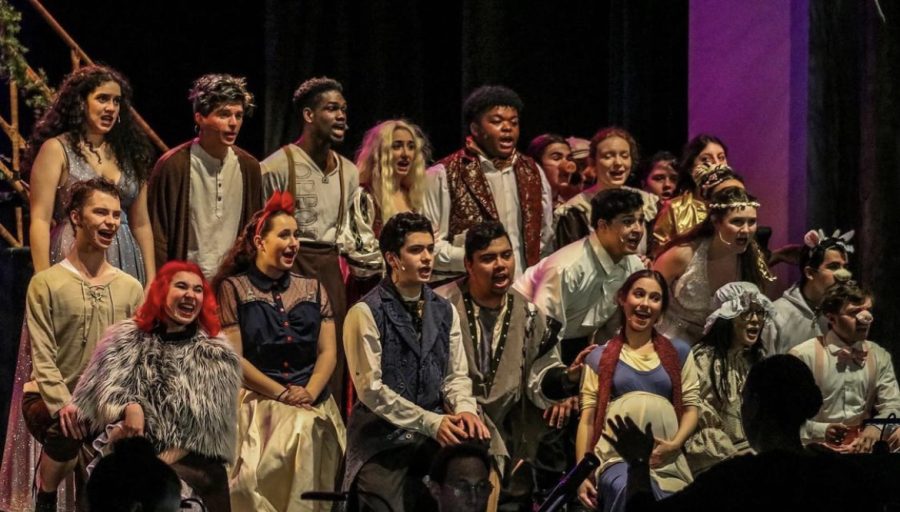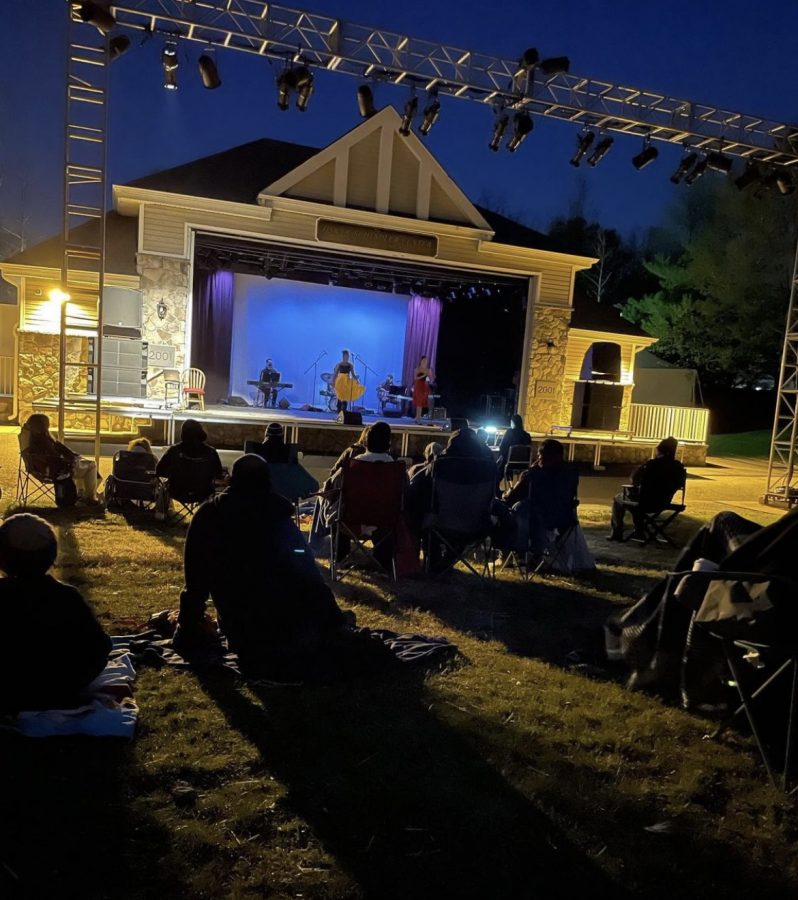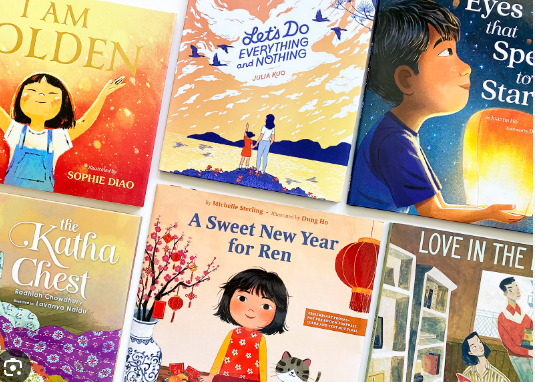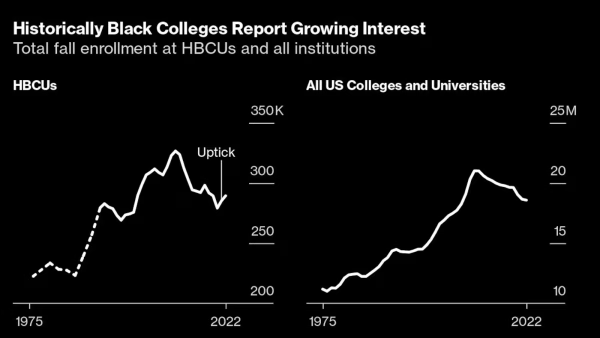Behind the Scenes, Beyond the Student
The second annual short film festival at West Orange High School Gives us a peak at what it looks like “Behind the Scenes.”
On Monday, May 15, the lights dimmed in the Library Media Center of West Orange High School where a mini theater had been created for the debut of ten student-made short films at the school’s second annual Short Film Festival. This event started last year with the theme “The Different Shades of West Orange” the event was a huge success so without hesitation Tynia Thomassie, the advisor of the Screen Writers Society at the high school and the organizer for this year’s short film festival, took on the challenge again. This year students selected the theme “Behind the Scenes, Beyond the Student ” to draw attention to the lives students lead outside of the classroom and the importance of validating young people in each aspect of their life.
Ten films were presented at the festival, each portrayed a side of students different from the skewed view of teens often held by adults. Each film was written, directed, and edited by high school students and each role cast teens as the leads. Films were separated into three main categories, animation, narrative, and documentary. The event itself was not organized as a competition but instead as a learning experience. Thomassie emphasized the journey behind the creation of each film, “these movies were made while the students went to school, took tests, played on varsity teams, turned in projects, [and] participated in other clubs” she said, “it’s hard to make a movie, but it’s even harder under those circumstances.” Thomassie insisted that the event be a celebration of overcoming the challenge of producing film and a round of applause for all of the students who, “put their vulnerabilities, their isolation, their passion, their fear, their frustration and their wonder on the screen.”
Among the ten films, three were part of the “10-Day Film Challenge”, which theater teacher Wendy Mapes challenged her students to participate in. The challenge had three requirements. 1: The lead character’s name must be Sam Derbish. 2: The film had to make use of a common prop, a cardboard box. 3: The line, “well, well, well…what do we have here.” From there, students had free rein.
The night ranged from animation on racism in society to haunting narratives on the reality of school shootings to striking documentaries exploring the magic of steam engines. “The students that attend this school have complex lives that no doubt are far more compelling and important behind the scenes and beyond the classroom,” Thomassie told the audience.
The viewing of each film and a five-minute intermission were followed by a Q and A session with filmmakers in which directors, editors, and actors spoke about their journey from the conception of an idea to the production of their films. Most students highlighted the obstacles they faced during production.
“My ego told me that [it] would be fine, [that] we would totally be able to do it,” Ethan Szymanski, a sophomore and producer of “Here, Me”, a short film about a deaf high school student and her journey to performing on stage. Szymanski explains that his original idea for the climax scene which takes place at a talent show, “was going to be [in] the auditorium and we were going to have a good 20 or 30 people to be the audience” he explains, “it was going to be this huge, massive, talent-show spectacle.” Szymanski describes his frustration with having to change filming locations after learning the auditorium would have to be used for the production of the Spring Musical, Grease, stating that simply finding filming locations took nearly 2 weeks.
Besides finding space to film, Szymanski also faced the challenge of having a very heavily-ASL based film. His film follows a deaf teen, Avery, who primarily uses American Sign Language to communicate, when she meets hearing Maxine, who has learned ASL to communicate with her deaf cousin, the two use sign language for the rest of the film. Neither Esther Jungreis, nor Lyric Dorcely was fluent in sign language before acting in this film, both worked hard to learn and memorize their signs in English along with ASL. With the help of Dr. Deborah Stryker who teaches in the Education of the Deaf/HH program at Bloomsburg University, Ethan was able to translate his script and make his vision a reality. Dr. Stryker taped and translated the entire script for Jungreis and Dorcely who were able to use her video to train and practice new signs.
In the high school setting there are so many limitations, from what rooms or hallways you can use to film in to simply organizing a group of students. As Thomassie highlighted in a welcoming message to viewers, “More often than not these films were shot on Iphones” Since the club itself doesn’t have a large budget to work with most students demonstrated resourcefulness that isn’t often attributed to “Gen-Zrs.” Thommasie explained “in a world of reels, selfies and TikToks it looks so easy to piece together a short video” in reality, the time and effort each film required was astronomical. With many students balancing their own social, extracurricular, and athletic lives, completing such a task was huge especially given these challenges.
Jonathan Mason Jr., for example, the writer and producer of “The Magic of Railroading and Steam” explained how he didn’t get much of his film completed until the wrestling season was over.
Ayanna Jones, animator and director of “Disregarded” a film addressing the prevalence of racism and microaggressions in today’s world, explained that she also had the challenge of collecting and editing together 14 different voice actor’s lines. Considering how busy many students are themselves, organizing such a large voice acting cast was tricky.
For other filmmakers including Basil Lyons, and participants in the 10 Day Film Challenge, the time crunch was a major obstacle. “I really underestimated how difficult animation was.” Lyons said, explaining that he drew around 400 frames in less than a week,” Lyons described how he had to switch animation software multiple times throughout his animation process, and underestimate how time consuming animation was in itself.
Daniel Levine, writer for the film “Boxed In” mentioned during the Q and A, that he “had to write the entire script in one night.” The editor and cinematographer of the same film, Sam Selikoff, “didn’t edit it until the very last night” says director, Jacob Schulman. “It was very stressful but I think the product we ended up with was fantastic” Schulman says, “I could not be more proud of our group.”
Elena Hause, writer and director of “A Fresh Start” sums up most filmmaker’s thoughts on the 10 Day Film Challenge portion of the festival. “It was a rocky process as they described; creating a film in ten days,” Hause says she took on writing and directing the film due in part to the lack of another writer in her class, “I took on the project out of necessity”, it was Hause’s first ever film and although a challenge, also a “great exercise in teamwork.” For many the festival was, like Hause their first experience in film, whether that be writing a script, producing, editing, or directing, despite the abundance of debuting artists the messages each film was able to portray spread were incredibly powerful.
The film “Boxed In,” for example, centered around the dangerous reality of school shootings but also the necessity to pay attention to the feelings of oneself and others. “We thought if we’re gonna really want to make an impact and place in this certain film challenge we would have to come out with a big message.” says Schulman, “Our message was: how in the United States, specifically…[in] states with looser gun laws…kids are able to you know to achieve this you know idea that they can get weapons and hurt people.” Boxed In follows a girl, Sam Derbish who struggles with bullying in her school, without an outlet to feel her emotions she resorts to violence. The short displays not only the importance of proper support but also the striking reality of gun violence in American schools. “We just wanted to create a message that would, you know, really show everyone really the danger of school, that is gun violence.”
While the back and forth about the way to combat violence in schools has been up in the air with politicians lodging for or against gun laws, the topic hasn’t escaped schools themselves. All over the country students and parents are forced to think about whether “they’re sending their kid to learn education or to their death” , says Schulman. He credits some inspiration to a short PSA video created by the families of Sandy Hook Shooting victims. The video demonstrates the uncertainty of safety at school, something that Schulman plays at in his film.
The film “A Fresh Start” also portrayed an important message and a common pressure many students find themselves grappling with. The film follows (another) Sam Derbish who has become trapped in a time loop, every class he steps into is the same. At the end of the short it is revealed that what kept him trapped and stagnant was the pressure he felt to figure out his future, and his feelings of it being “too late” to look for colleges. “You know college doesn’t have to be this big thing that you’re stressing about- it’s this time for you to become a new person, know it’s just about finding a new home,” Sam’s classmate Dylan tells Same. “There’s always time,” says another. A sentiment that is certainly a reflection of the pressures high school students face and also the anxiety spiral that can come with it.
The film portrayed “ the idea of being stuck in your mindset, feeling like every day is the same” says Hause, the director, “It wouldn’t make a difference if a class that I walked into was the same class as before, it would feel the same.” Hause explained that she was drawn to “the idea that you can only break the loop once you break free from that.” A simple idea that hit close to home for many.
Besides being centered around the theme “Behind the Scenes, Beyond the Student” many films happened to share a “Common theme of isolation” , observes Thomassie. Similar to how both Derbishes felt in “Boxed In” and ”A Fresh Start”.
“It [is] very interesting for an adult to see the reflection of the adult world through teen eyes,” Thomassie says. Events like these are not only creative outlets for expression but also platforms that give students a voice and allow them to vocalize issues that might otherwise go undiscussed.
After the Q and A portion of the evening, Student-Filmmakers got the chance to speak to professional filmmakers who shared their expertise and thoughts about each film.
Matt Stryker is a Producer, Director, and Editor who has worked on “In Between Girl” a short film selected for the South by SouthWest Audience Best Selection award in 2022 he also assistant directed and co-edited “When I Left You on that Boulevard” which was the Grand Jury prize for the Best Short at this year’s Sundance Festival. In his conversations with student filmmakers he validated the struggle of production, telling one director, “That is going to be your experience with filmmaking for the rest of your life,” after they expressed their painstaking process of trying to find the ideal set.
Beyond the Struggle, Kayla Galang who also worked on “When I Left You on that Boulevard” and “Learning Tagalog with Kayla” which received the South by SouthWest Audience Best Selection Award, told the students, “all films are miracles to make and they should be so freaking proud of themselves.” Galang also encouraged the blossoming filmmakers to “keep learning, [and] leaning into their instincts as they grow”
“I am thrilled with how the event went,” Thomassie reflected, “Having more people in the audience than chairs is a happy problem and I couldn’t have been more proud of the producers, directors and actors. They communicated their vision, delivered impressive final products, and they showed their tenacity by crossing the finish line. I’m most proud that each filmmaker had a profound learning experience in making their movies. That made me the happiest. Every grade level was represented, and a wide array of stories were told. That made all the work worth it.”
All films are available for free online aswell as the full program.









































































